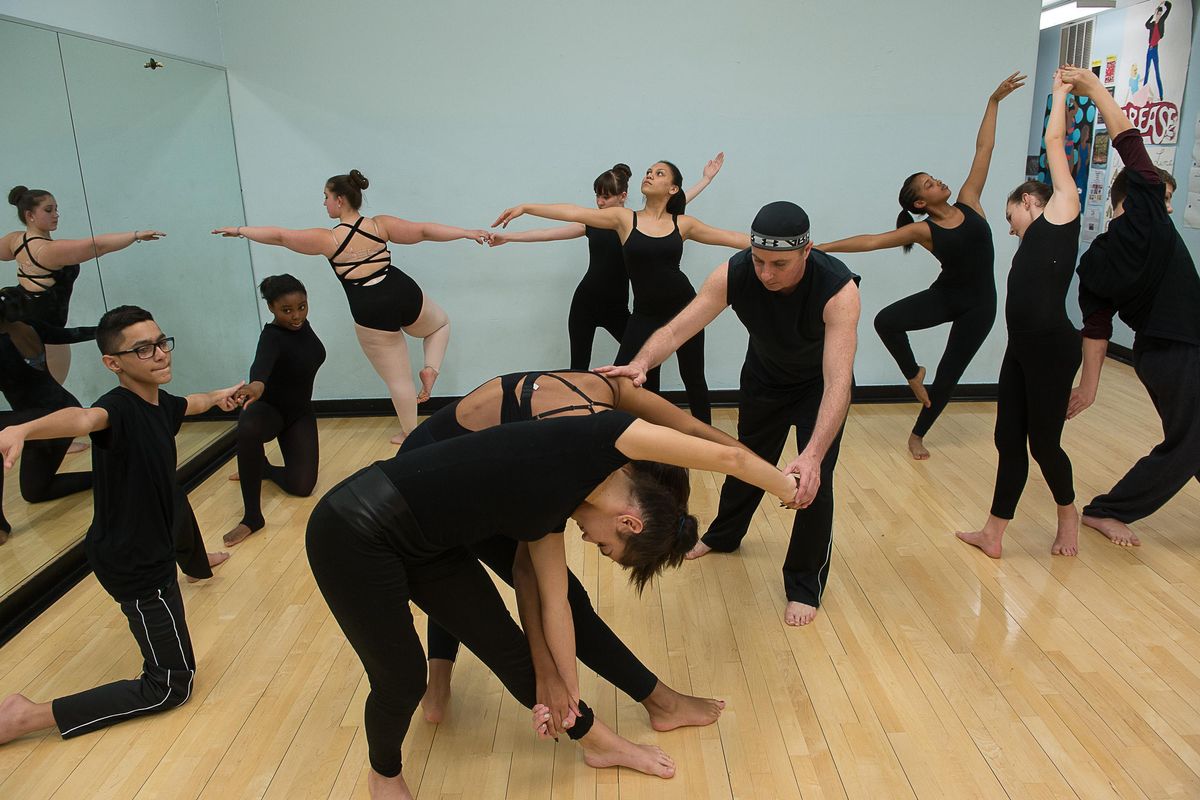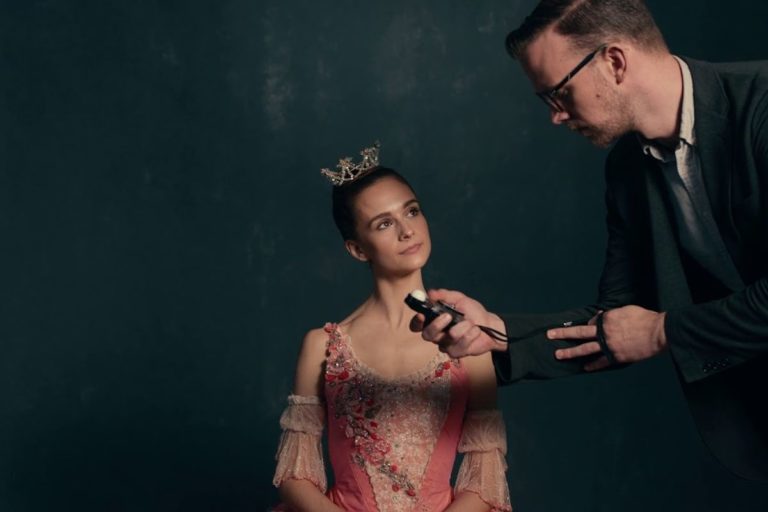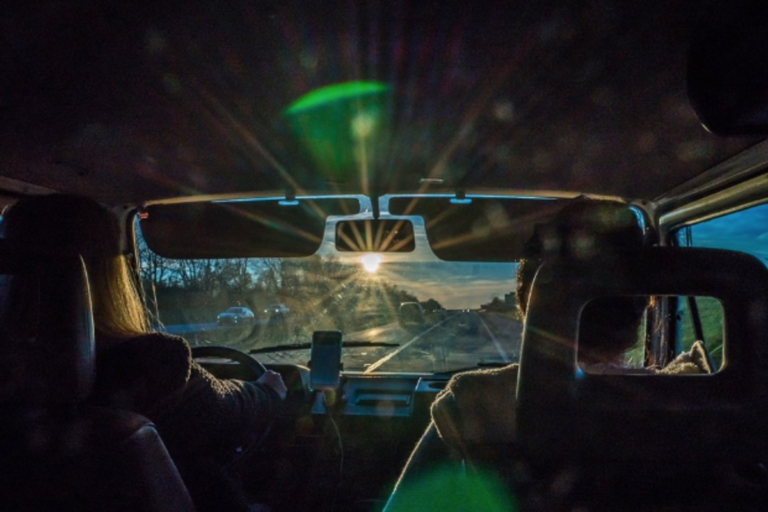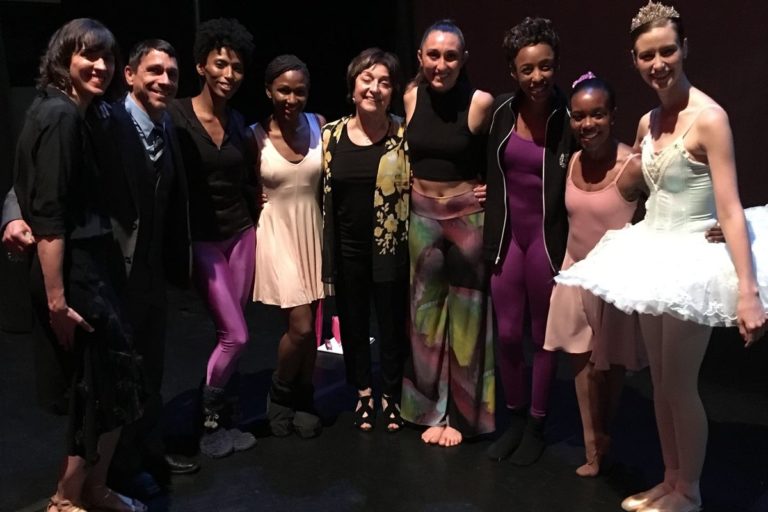
“You know when people ask, ‘Why does dance belong in K–12?'” asks middle-school dance teacher Michael Kerr. His response: “Well, why not? Not everyone who takes dance classes has the ambition of becoming a dancer, just like not everyone who studies science wants to become a scientist. That’s a big revelation for my students. It changes the way they approach their work. I hope that when they walk out of my program, they will have a deeper appreciation for dance, be better-cultivated human beings and be more comfortable moving together.”
Kerr has been teaching dance in New York City public schools for more than 20 years. Because of the success of the public middle-school dance program he created for Brooklyn’s New Voices School of Academics & Creative Arts, he was one of five dance instructors to be featured in the 2015 documentary PS DANCE!, which examines the impact dance education programs have on NYC public school students and their daily learning.
With a standards-based educational approach, Kerr piques his students’ curiosity and passion for dance. “Michael fosters an atmosphere of acceptance in his classroom, so students feel safe in improvising and expressing themselves in front of their peers,” says PS DANCE! narrator Paula Zahn. “There are no mistakes in Michael’s classroom, just opportunities to learn.”
A Blueprint for Dance
Kerr is known among his peers for creating an educational environment that aligns with the Blueprint for Teaching and Learning in Dance, Grades PreK–12, the NYC dance curriculum guidebook for public schools, which Kerr helped write in 2005.
The Blueprint release made a significant difference for public-school dance educators, who had often had their work minimized by peers and school administrators, Kerr says. “Dance teachers are finally being taken more seriously in New York City,” he says. “No, we are not physical-education teachers. We are no different than math or science teachers. You have to have the tenacity and a passion to do this work. I take it very seriously.”
Classroom Implementation
Kerr’s classes are a seamless blend of content and discovery, with students learning dance skills and technique contextualized by dance history and theory, says Deborah Damast of NYU Steinhardt, a contributor to the second edition of the Blueprint, and a colleague of Kerr’s when he was on faculty at 92nd Street Y Dance Education Laboratory. “His students create original work that is relevant and important to who they are,” she says, “and they have opportunities to work with masterworks and guest artists from major dance companies.”
Since Kerr started his New Voices program in 2000, every sixth-grade student—there are nearly 200 of them each year—is required to take his introduction-to-dance class. It’s a sequential, Laban Movement Analysis–based program, which introduces core elements of dance as a foundation to developing a class choreography and familiarizes students with the lives and work of 20th-century dance artists, like Isadora Duncan, George Balanchine and Katherine Dunham. “Knowing about the life and work of a dance artist enables my students to think analytically about the dances we see and to become perceptive spectators,” says Kerr. At the end of the year, the students—some having never had a dance class before meeting Kerr—perform in a showcase for the entire school community and their families. “It doesn’t get any better than when they see that everything they learned really did have some significance,” Kerr says. “They see how each class created choreography based on their learning, in their own unique way.”
When students reach seventh grade, they pick an arts “major,” like theater, music or graphic arts. Dance majors work with Kerr on techniques, such as ballet, modern, hip hop and jazz, and they further experiment with the choreographic process. “I allow for a lot of exploration, a lot of risk taking. I’m not the 2+2=4 teacher,” says Kerr, adding that he encourages his students to resolve their own issues without adult intervention whenever possible. “A lot of students want validation that they’re doing something right and ask me for help. I tell them, ‘Why do you need my help? Why do you think I know the answer?'”
Lifelong Impact
Brooklyn resident Shakirah Windbish, 22, was one of Kerr’s students. She now works at New Voices and assists Kerr in his classes three times a week. “He’s always been an ambitious, hard-working, structured teacher, but I feel like he’s perfected his craft even more,” she says.
In addition to learning firsthand tips on how to be a better teacher, Windbish is also an apprentice in Kerr’s seven-member not-for-profit company, DanceKerr & Dancers, which he founded in 2015. The company performs Kerr’s work throughout the NYC and New Jersey area.
Windbish hopes to someday run an occupational therapy practice that incorporates dance. “It feels good that I get to help and be supportive to the students, and that I get to help Mr. Kerr and continue to learn from him,” Windbish says. “I can’t give dance up ever. It’s within me.”



